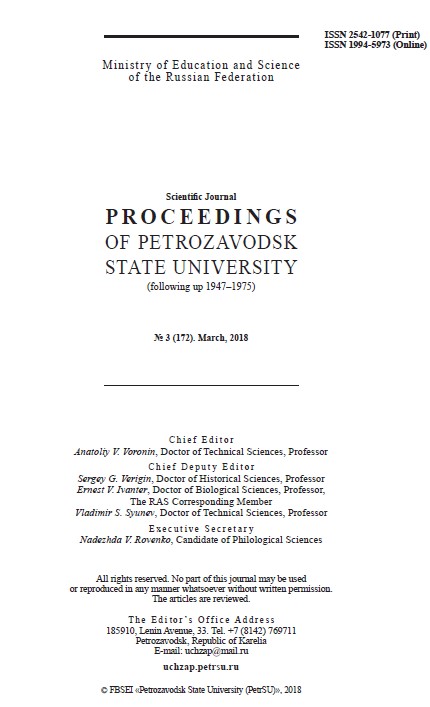БИОГЕОХИМИЧЕСКИЕ АСПЕКТЫ ЗАГРЯЗНЕНИЯ ВОДОЕМОВ УРБАНИЗИРОВАННЫХ ТЕРРИТОРИЙ В РЕСПУБЛИКЕ КАРЕЛИЯ НА ПРИМЕРЕ ОКУНЯ (PERCA FLUVIATILIS)
BIOGEOCHEMICAL ASPECTS OF WATER BODIES POLLUTION OF URBANIZED TERRITORIES IN THE REPUBLIC OF KARELIA ON THE EXAMPLE OF PERCH PERCA FLUVIATILIS
Author(s): Dmitry Georgievich Novitsky, Nikolay Viktorovich Ilmast, Zakhar Ivanovich Slukovskii, Irina Viktorovna SuhovskayaSubject(s): Physical Geopgraphy, Environmental Geography, Human Ecology, Rural and urban sociology, Environmental interactions
Published by: Петрозаводский государственный университет
Keywords: river perch; Perca fluviatilis; heavy metals; small lake; bottom sediments; urban areas; anthropogenic impact;
Summary/Abstract: The results of the analysis of the accumulation of heavy metals, V, Cr, Ni, Cu, Cd, Pb, Mo, Sb, Sn, W are provided. The research was conducted with the mass spectroscopic method based on the XSeries-2 ICP-MS device. The muscular tissues, liver and bones of the river perch Perca fluviatilis from Lake Chetyryokhvestnoe (area – 0,118 km2), located in the city of Petrozavodsk, were studied. Despite the relative remoteness from the center, the reservoir is constantly subjected to the anthropogenic load. Potential sources of heavy metals that enter and accumulate in the waters of the city lake together with the wastewater from the nearest catchment are economic entities and emissions coming from the road and rail transport and industrial enterprises in Petrozavodsk. The paper presents the results of the study of the dynamics of accumulation of heavy metals in bottom sediments. It was concluded that an increased level of contamination of the sediments of the reservoir affects the accumulation of toxic elements in living organisms, including representatives of the fish fauna of the lake. The results of experimental fishing on the Lake Chetyryokhvestnoe showed that the fish fauna of the reservoir is represented mainly by the river perch, the most common type of fish for Karelia. The age composition of catches was represented by the individuals of four age groups (from 2+ to 5+); five-year old species dominated (21 %). It was established that the greatest accumulation in all organs of the fish was noted for such essential elements as P, Zn, Mn. As for heavy metals, the greatest accumulation is characterized by Ni. It is noted that almost all heavy metals accumulate actively in the liver of the fish. Most elements have close correlation links, for example, between Pb and V or Mo and W. The obtained results speak of the presence of consistent anthropogenic sources of metals entering the ecosystem of the city lake.
Journal: Ученые записки Петрозаводского государственного университета
- Issue Year: 2018
- Issue No: 3 (172)
- Page Range: 42-51
- Page Count: 10
- Language: Russian

